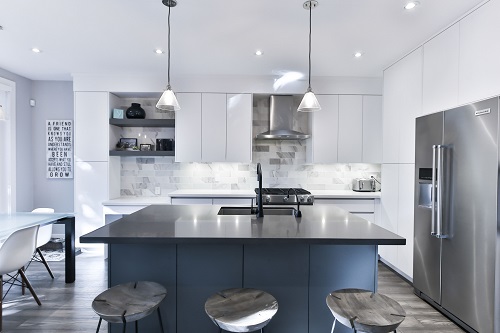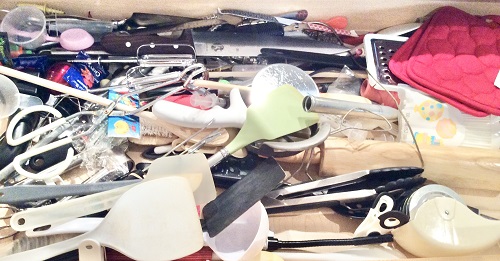What is D.D.O.T.?
By Pamela Wong
Pamela is a Trained Professional Organizer based in Oakville, Ontario and is the owner of Zen N Organized. She helps homeowners and small business owners transform their homes and home offices into organized spaces. She has a practical, non-judgemental approach to organizing. Her objective is to create functional and harmonious spaces for her clients.

Ever wonder what it would be like to live in a clutter-free home, where everything is in order, and all is in harmony?
A home with no mess. Toys and shoes are put away nicely. Papers and documents are appropriately filed with clear labels.
A place for everything and everything in its place.
Are you wondering, “Yes, that would be great. But how do I achieve this?”
Many TV and Netflix programs do not show the true reality. These programs depict the chaos in the home and the emotional stress that comes with the clutter, but they mislead the audience by showing only a very small portion of what professional organizers do and the home miraculously gets transformed after the 2-minute commercial break into a bright, airy, livable space. In the one-hour span of the show, the home is transformed from a stressful, cluttered mess into a beautiful space and the homeowners went from being stressed to elation in one hour.
The truth is that Trained Professional Organizers like me, spend a lot more than the “2-minute commercial break” to complete the project. We work with our clients to find the cause of the clutter. We design solutions taking into account the clients personalities, their budget, family dynamics and what we can do within the time frame. We sort, declutter while maximizing the use of the space and go on the emotional journey with them throughout the entire process.
So what are the steps to achieve a clutter-free home? I like to use the acronym: D.D.O.T. (D-Dot)
1. Design
Before taking everything out of the kitchen cabinets, we need to understand why the shelves are filled with stuff in the first place.
What is the cause of clutter? How did the clutter get there in the first place? What are the checks and balances that need to be put in place to prevent this from happening again in the future? This step is crucial before designing the plan.
Once we know the cause and how to prevent it, we can create a plan. Use SMART* goals as a guideline to create a realistic and detailed plan. Divide the project into small executable steps with precise timelines.
*You can understand more about SMART goals here: https://en.wikipedia.org/wiki/SMART_criteria
2. Declutter
Some people use de-own, edit, simplify, pare down, release, or purge instead of the word declutter. While the word choice is different, the process is the same – to review what you have and only keep what you need. It is the act of removing unwanted items so that efficiency in that space is restored.
Using the plan outlined in step 1, execute the decluttering tasks accordingly. Is the task to tackle one area or one room at a time? Or is the task to edit all the books at the same time?
While reviewing each possession, ask who, what, when, where, why and how. Here are some questions to ask yourself: When was the last time you used this item? Where does this item belong in the house? Why do we need to keep this? What would happen if you don’t have this item? How should I honour the person who I inherited this item from? By answering these questions, you can determine what needs to stay and what can go.
Remember your end goal throughout the decluttering process. Your goal is to make the space more efficient. Holding onto everything has not helped you in the past. By keeping what you need and removing the excess, you no longer need to spend time looking for things, or tripping over things.
3. Organize
Once you’ve pared down to what you need to keep, then sorting the items to the respective categories and finding the right containers would be the next step.
For example, sorting your clothes by type then by colour will help you get ready faster in the morning. Similarly, separating your personal papers from your work documents will help save you time.
There are more personal preference and esthetics involved in this step. Some people may prefer using clear bins, while other prefer opaque ones. Some prefer using baskets over bins altogether. Some people prefer to label their files in more general terms (e.g. banks) while other prefer more specific names (e.g. Bank ABC, Bank XYZ). There is no right way or wrong way. The perfect way is what works for you.
In addition to the esthetics, you will also want to maximize functionality based on room layout. For example, using vertical space is often an easy solution for smaller spaces.
4. Tweak – Fine tune, refine, reassess, make small adjustments
From time to time, minor adjustments may be needed. It may be as simple as moving glasses to the right and mugs to the left. These small tweaks can make the space more efficient.
Repeat steps 2, 3 and 4 as you move through different areas of your home (kitchen, closets, books, papers, mementos etc.).
Remember, to bring balance back in your home, you need to divide the project into smaller manageable tasks and set realistic timelines. Be willing to work towards those goals and harmony can be restored.
Ready to do the D-DOT?



